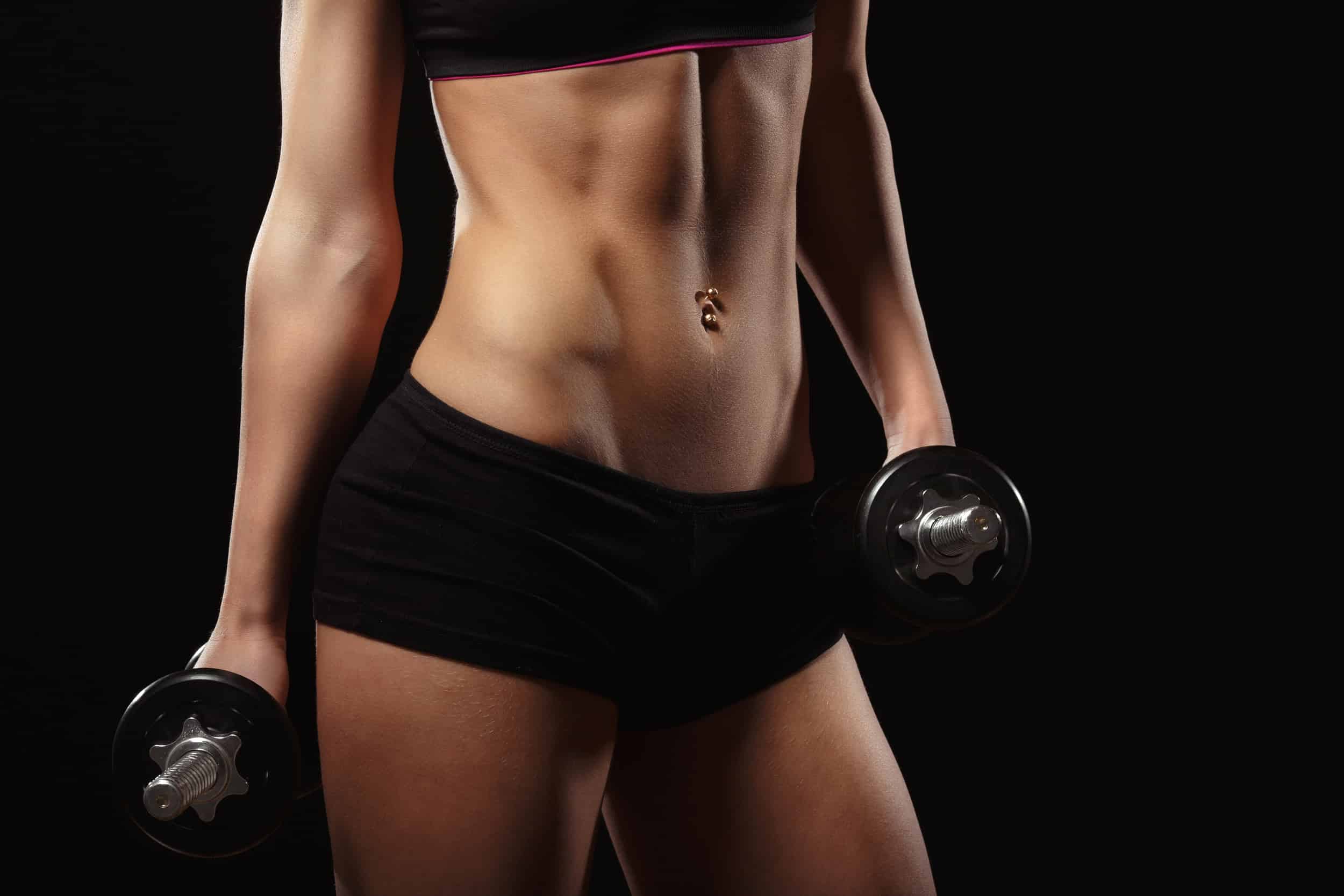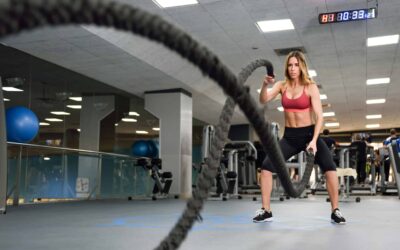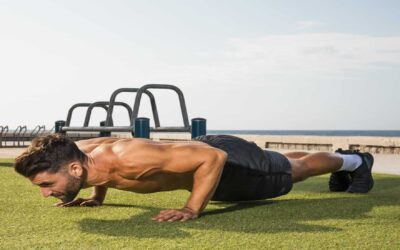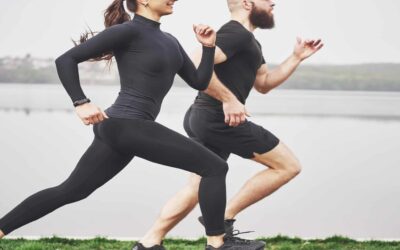Chair aerobics is a modified version of aerobic exercise that can be performed either seated in a chair or standing while using the chair for balance. It is a great way to achieve the benefits of aerobic exercise for those of whom some of the aspects of regular aerobic exercise may pose a risk.
An example of the population that chair aerobics is most beneficial for is the elderly, who may be at higher risk of having a fall when performing normal aerobic exercise. Every year an estimated 30-40% of patients over the age of 65 will fall at least once. As home-based exercise has been found to reduce the rate of subsequent falls, it is also important to consider aerobic exercise as part of a fall prevention strategy in the elderly.
In the elderly, it is recommended that exercise programs should include a combination of aerobic, resistance, flexibility, and balance exercises. All these exercises can be performed as a chair-based modification. In this article, we will mainly focus on chair aerobics exercise. Do stay with us.
HEALTH BENEFITS OF AEROBIC EXERCISE
Aerobic exercise has a significant impact on cardiovascular health, including decreased risk of heart disease, reduced blood pressure, improved blood sugar regulation, and improved lung function.
The improved efficiency of the body to deliver oxygen to the working muscles results in a reduction in the resting heart rate, and reduces the stress put on the heart.
The reduction in blood pressure also makes it easier for the heart to pump blood around the body, producing less resistance and reducing stress on the heart.
In the elderly, it has been found that chair-based aerobic exercise can elicit reductions in physical frailty and improvements in functional disability. Exercise has also been found to be effective in improving memory function and acting as a non-pharmacological method of improving sleep quality and inflammation.
EXAMPLES OF CHAIR-BASED AEROBIC EXERCISE
To perform chair aerobics, there are various variations and exercises available. The exercises mentioned below exercises can be performed either for a period of time (ie. 30 seconds, 1 minute, etc.), or for a number of repetitions (ie. 10 repetitions, or 10 repetitions each side for single side exercises).
It is highly suggested you perform each exercise for a period of time, allowing you to ensure you are achieving the desired duration of exercise and allowing for the pace to be increased without reducing exercise duration as aerobic fitness improves.
Sit-to-Stand
The sit-to-stand exercise is a great way to increase the heart rate, whilst also training a functional movement.
You perform the exercise by first sitting in a chair, with legs about shoulder width apart and feet flat on the floor. The chair should be one that allows for the upper leg to be parallel with the ground and should not be cushioned if possible.
The movement is to then stand from the chair to a position of standing up straight. The aim is to not have to use your hands to help push up out of the chair, however if standing unassisted is not possible this modification can be made. If the arms are to be used, they should preferably be on the arms of a chair, rather than pushing on your legs.
Only enough effort should be exerted through the hands to allow the movement to occur and should not become the focus of the movement.
Once standing up straight, the next movement is to return to a seated position. This should occur in a controlled manner, moving backwards with the hips first as you lower back into the chair.
Again, if the hands are to be used for balance and/or support, they should only be used to that extent and not to hold the body up.
Knee Extensions
The knee extension exercise is a great way to engage the quadricep muscles, which being larger muscles in the body facilitate larger improvements in cardiovascular health.
In a seated position on the chair, with knees and feet together, starting with the right leg you want to straighten your leg out. When doing this, you want to keep your knees level, and finish in a position where the straight leg is parallel with the ground.
The leg should then be lowered back to the starting position in a controlled manner, before completing the exercise with the opposite leg. The exercise should be performed at a pace that allows for the movement to be controlled, but also increases the heart and breathing rate.
Hamstring Curls
Essentially the counter movement to the knee extensions, this exercise uses the large hamstring muscles at the back of the leg. Sitting on the chair, your heels should be placed on the floor as far out from the chair as you can reach.
Either one leg at a time, or both legs at the same time, the heels should be dragged along the floor towards the chair. Once at the chair (or under the chair if you want to drag them a little bit further), the feet can be lifted off the floor and moved back to the start position.
If this exercise is too easy, it can be modified to be performed in a standing position behind the chair, using it for balance. Standing up straight, with hands on the back of the chair, one leg at a time, the knee should be bent to bring the heel up towards the backside.
When doing this, to ensure the hamstring is performing the work, the knees should be kept together. The heel can be brought up as close to the backside as possible before the foot is lowered back to the floor in a controlled manner.
Chair Marching
This exercise is as simple as marching on the spot while in a seated position. When seated in the chair, knees should be about shoulder width apart, with feet flat on the floor.
The right knee should be raised, causing flexion at the hip joint while keeping the lower leg perpendicular to the ground. Once the right leg is returned to the ground, the exercise should be performed with the left leg.
If seated marching is too easy, the exercise can be performed in a standing position. This should be performed either facing the chair, or side onto the chair, so that it can be held onto for balance while marching on the spot.
Calf Raises
This is a great exercise for encouraging movement of blood through the lower legs, especially in those with cardiovascular issues which result in pooling and swelling.
Sitting on the chair, feet should be flat on the ground, shoulder width apart. Pushing through the toes, the heels should be lifted off the ground as you feel your calf muscles contract. This can either be performed with both legs at the same time, or one leg at a time alternating.
As with the marching, if the seated version is too easy the exercise can be performed in a standing position. Standing behind the chair, with hands on the back of the chair, the exercise can again be performed either with both legs at the same time, or one leg at a time alternating.
Chair Boxing
This is a great upper body alternative that helps work the muscles in the arms, whilst also getting the heart rate up.
In the seated position, you can either punch straight out in front, or straight up in the air (or a combination of both).
For anyone with shoulder impingement issues, it is recommended that just the out in front method is used. You can either punch both arms at the same time, or alternate while moving through different patterns.
RISKS OF AEROBIC EXERCISE
The main risk when performing any form of aerobic exercise is putting too much stress on the heart in instances where there is an underlying cardiovascular issue.
To alleviate this risk, you should consult with your doctor before starting any exercise program to ensure there are no risk factors that should be accounted for.
If you do have pre-existing health issues that need to be accounted for, you should consult with a qualified exercise physiologist who will be able to advise on what exercises would be suitable, what intensities you should be aiming for to ensure you are safely achieving the benefits of the exercise, and what should be avoided.
To reduce risk of injury, it is important to ensure you build up the intensity during the program, and don’t start at the highest intensity. This will allow the muscles time to warm up and prepare for more involved movements.
TIPS AND ADVICE
When performing standing exercises and using the chair as a balance aid, you may wish to have the chair positioned against a wall to ensure it does not move while you are performing the exercise.
Consider any injuries you may have and ensure that exercises are modified to ensure further injury is not sustained.
If you have pre-existing cardiovascular issues, consider what other tasks you will need to complete during the day and how the exercise will fit in with that. You want to avoid fatiguing after the exercises and not being able to complete the rest of the tasks that you need to complete.
Try and change up the order of exercises, duration of the exercises and even where you do the exercises to keep it interesting and not too repetitive.
KEY TAKEAWAYS
Chair aerobics is a great way to achieve the benefits of aerobic exercise. It is modified for those who may not be able to safely engage in normal aerobic exercise. There are many different variations of exercise that can be performed, and all exercises can be adjusted to suit the individual’s level of conditioning. Chair aerobics is especially beneficial for the elderly, who see several different benefits to functioning, injury and fall risk brought about by aerobic exercise.
Article Sources
HealthxTips is committed to delivering content that adheres to highest standard for accuracy, sourcing and objective analysis.
HealthxTips uses only high-quality and trustworthy sources to support the facts in our articles.
1. Abd El-Kader, S. M., & Al-Jiffri, O. H. (2019). Aerobic exercise modulates cytokine profile and sleep quality in elderly. African health sciences, 19(2), 2198–2207. https://doi.org/10.4314/ahs.v19i2.45
2. Adams, V., & Linke, A. (2019). Impact of exercise training on cardiovascular disease and risk. Biochimica et biophysica acta. Molecular basis of disease, 1865(4), 728–734. https://doi.org/10.1016/j.bbadis.2018.08.019
3. Ambrose, A. F., Cruz, L., & Paul, G. (2015). Falls and Fractures: A systematic approach to screening and prevention. Maturitas, 82(1), 85–93. https://doi.org/10.1016/j.maturitas.2015.06.035
4. Erickson, K. I., Voss, M. W., Prakash, R. S., Basak, C., Szabo, A., Chaddock, L., Kim, J. S., Heo, S., Alves, H., White, S. M., Wojcicki, T. R., Mailey, E., Vieira, V. J., Martin, S. A., Pence, B. D., Woods, J. A., McAuley, E., & Kramer, A. F. (2011). Exercise training increases size of hippocampus and improves memory. Proceedings of the National Academy of Sciences of the United States of America, 108(7), 3017–3022. https://doi.org/10.1073/pnas.1015950108
5. Furtado, G. E., Carvalho, H. M., Loureiro, M., Patrício, M., Uba-Chupel, M., Colado, J. C., Hogervorst, E., Ferreira, J. P., & Teixeira, A. M. (2020). Chair-based exercise programs in institutionalized older women: Salivary steroid hormones, disabilities and frailty changes. Experimental gerontology, 130, 110790. https://doi.org/10.1016/j.exger.2019.110790
6. Galloza, J., Castillo, B., & Micheo, W. (2017). Benefits of Exercise in the Older Population. Physical medicine and rehabilitation clinics of North America, 28(4), 659–669. https://doi.org/10.1016/j.pmr.2017.06.001
7. Liu-Ambrose, T., Davis, J. C., Best, J. R., Dian, L., Madden, K., Cook, W., Hsu, C. L., & Khan, K. M. (2019). Effect of a Home-Based Exercise Program on Subsequent Falls Among Community-Dwelling High-Risk Older Adults After a Fall: A Randomized Clinical Trial. JAMA, 321(21), 2092–2100. https://doi.org/10.1001/jama.2019.5795








0 Comments